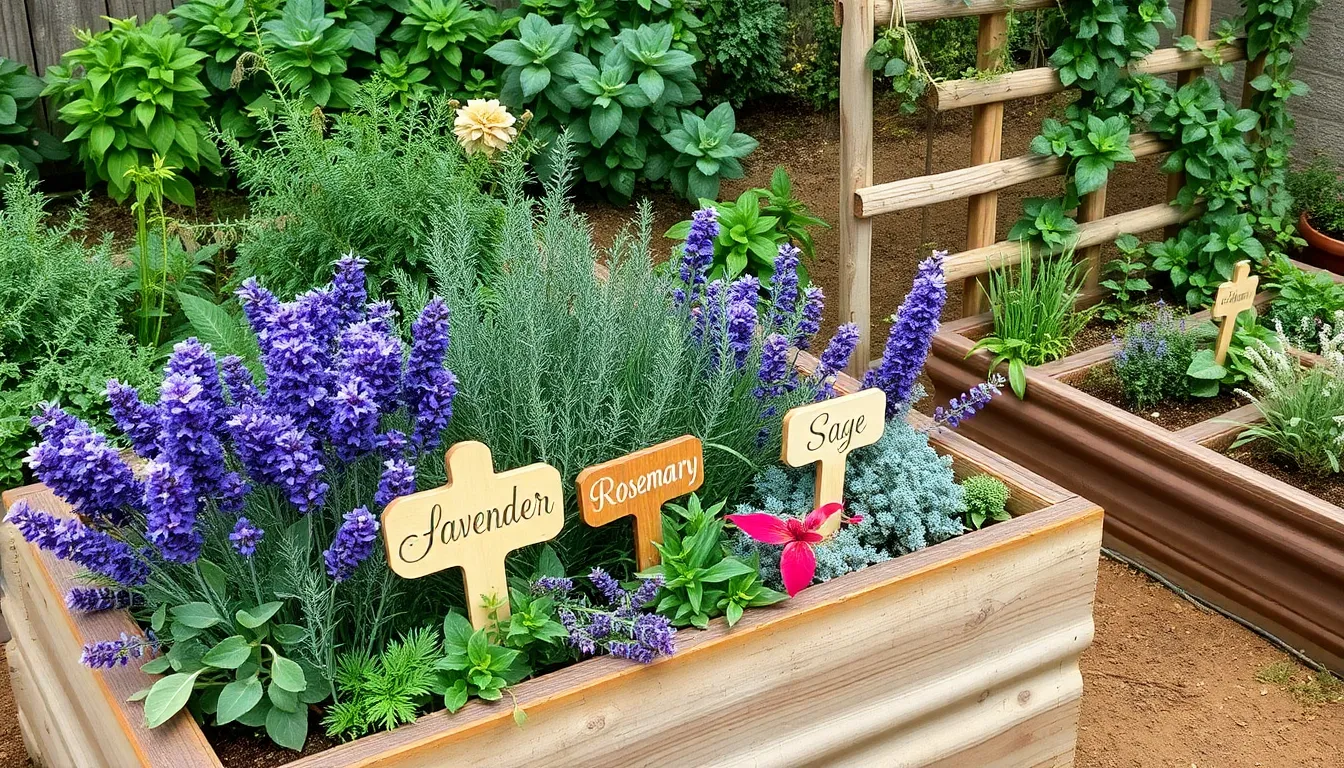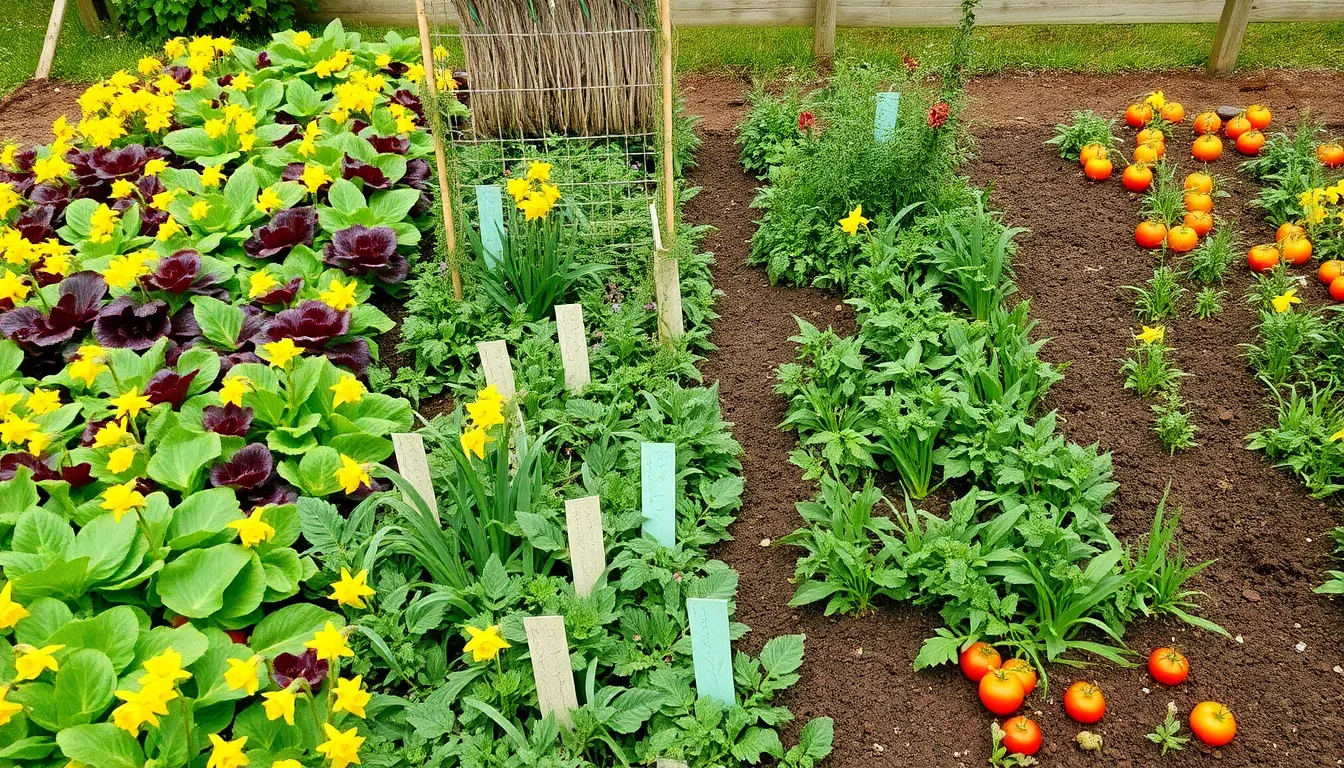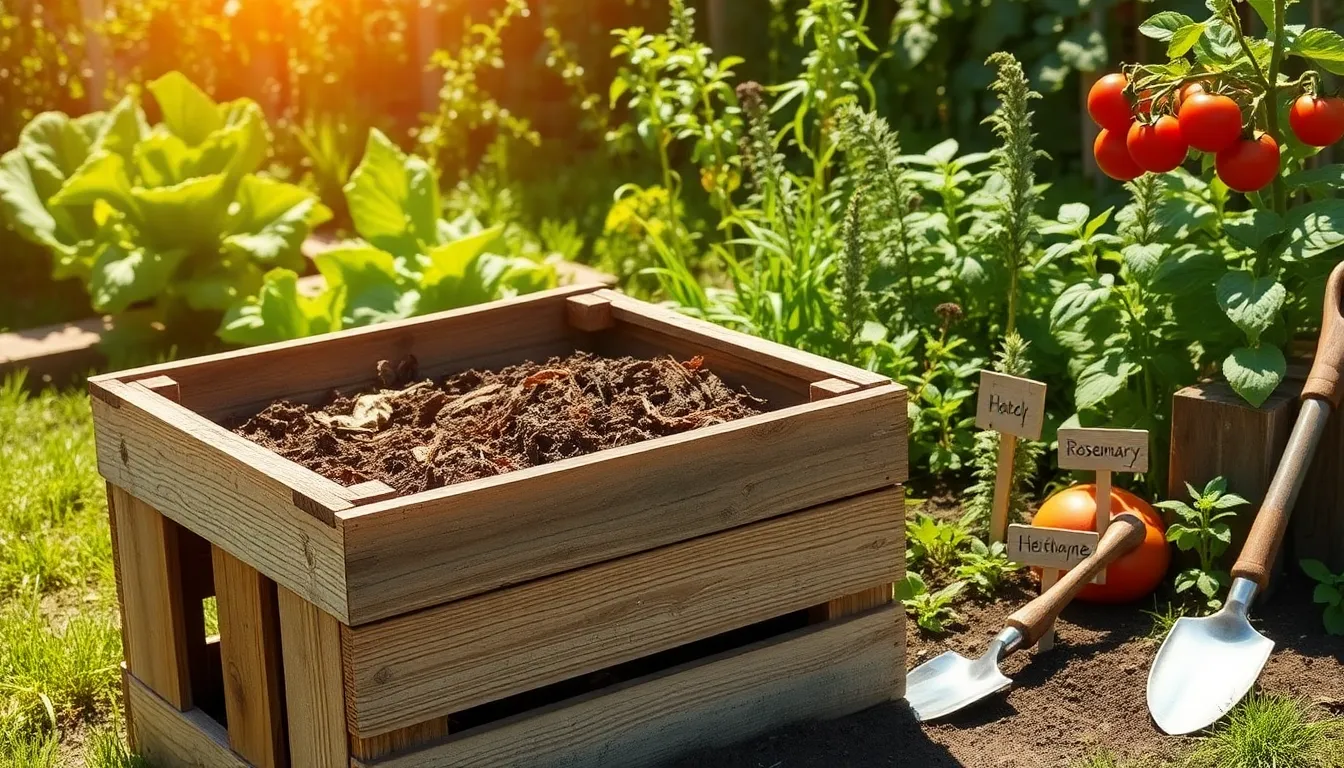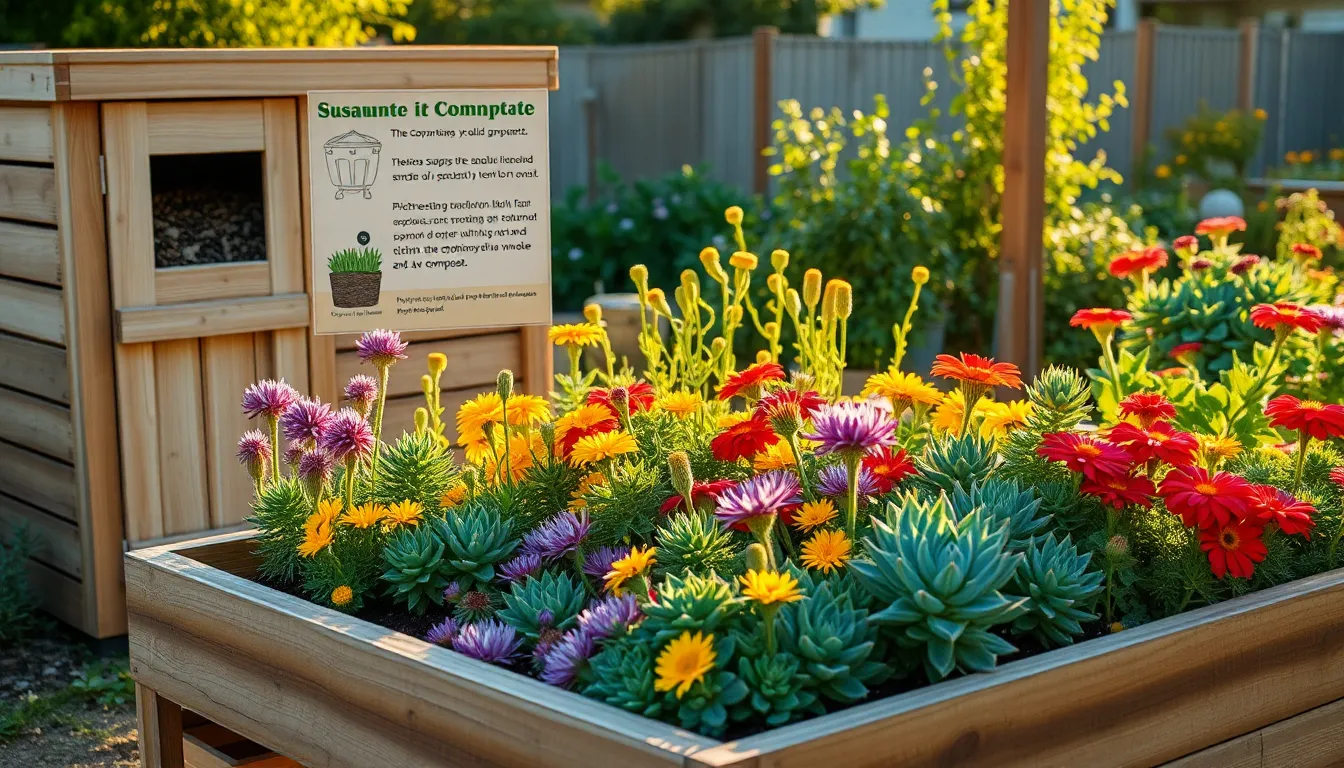Welcome to “10 Low-Water Herb Garden Tips,” where the art of gardening meets the joy of sustainability! Whether you’re a newcomer eager to dip your toes into the world of herbs or a seasoned gardener looking to refine your skills, this guide promises a bounty of fragrant success without the worry of constant watering. Imagine stepping into your garden and plucking fresh, aromatic herbs that have thrived with minimal effort—it’s not just a dream, but a delightful reality waiting for you to cultivate.
In a world where water conservation is more crucial than ever, designing a low-water herb garden brings both environmental and personal rewards. With these ten practical tips, you’ll discover how to create a lush, thriving oasis that not only saves water but also enhances your culinary adventures and health. Feel confident as you embark on this green journey; armed with these expert techniques, your herb garden will flourish, bringing you endless satisfaction and a connection to nature’s wonders.
Choose Drought-Tolerant Herb Varieties
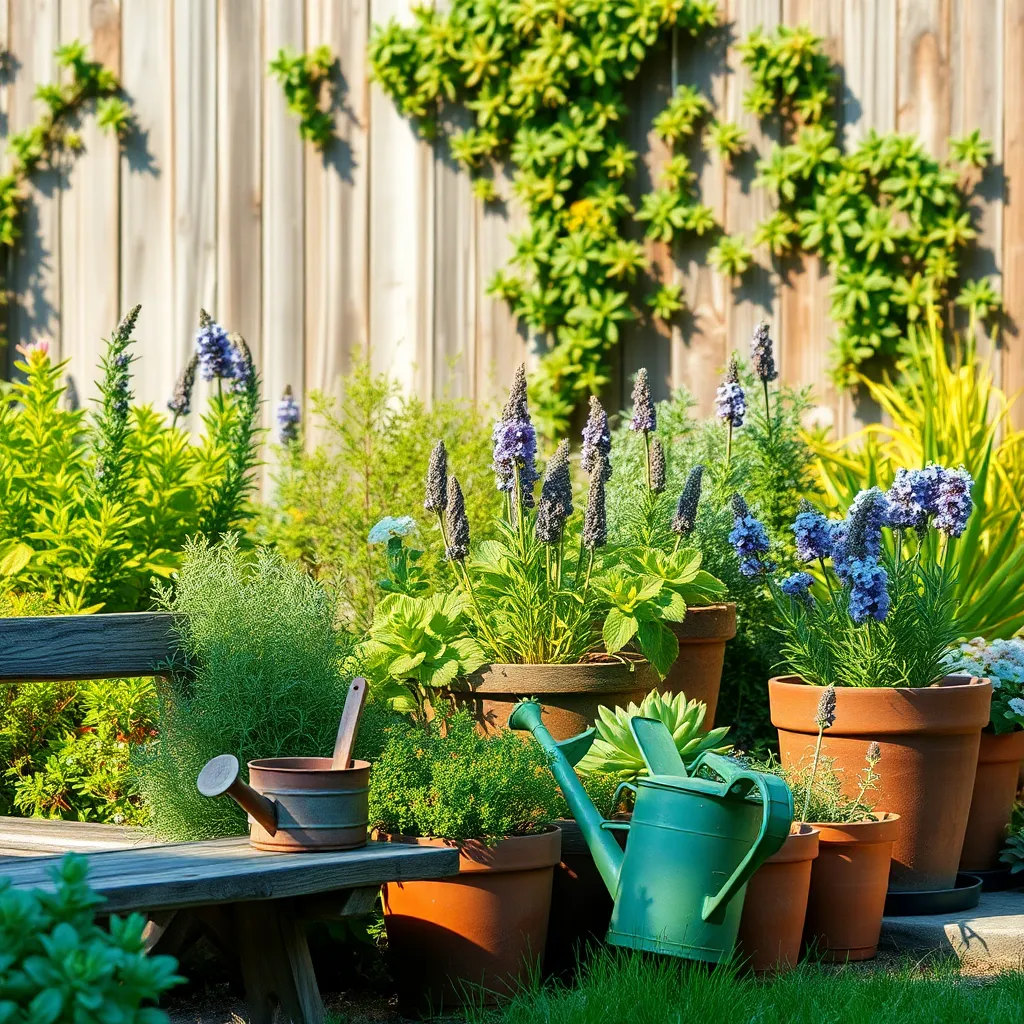
When planning a low-water herb garden, incorporating drought-tolerant varieties is essential. Herbs like rosemary and thyme are excellent choices, as they thrive in dry conditions and require minimal watering once established.
Consider planting oregano and sage, which are also known for their ability to withstand drought. These herbs prefer well-drained soil and full sun, making them ideal for rock gardens or areas with sandy soil.
For added benefits, choose lavender, which not only handles dry spells well but also attracts beneficial pollinators to your garden. Ensure lavender is planted in a sunny spot with alkaline or neutral soil, and prune it regularly to encourage bushy growth.
Advanced gardeners might explore the use of mulch to conserve moisture around these drought-tolerant herbs. A layer of organic mulch, such as straw or wood chips, can significantly reduce evaporation and maintain soil temperature, enhancing the resilience of your herbs.
Incorporate Mulch to Retain Moisture
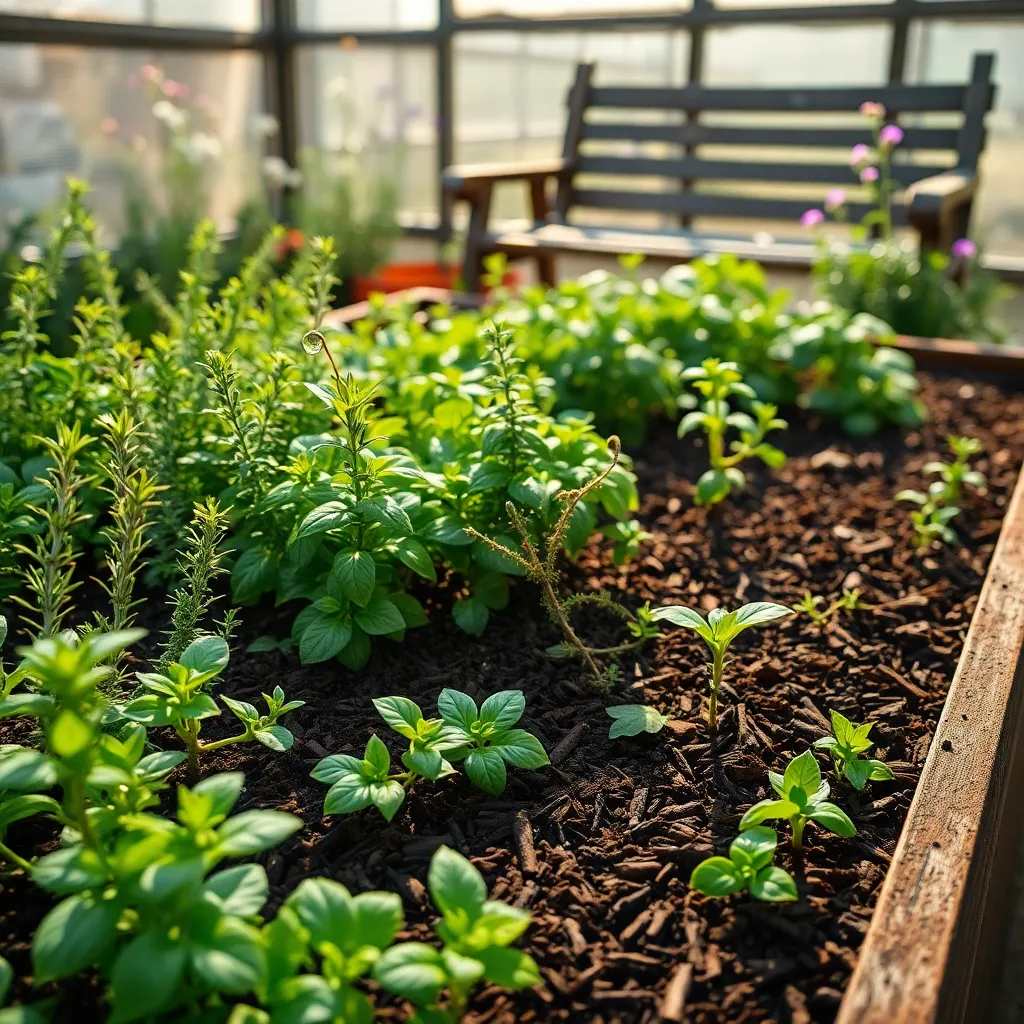
Incorporating mulch into your herb garden is an effective way to conserve moisture, reducing the need for frequent watering. Organic mulches, such as straw or shredded leaves, can significantly help in maintaining soil humidity by preventing evaporation from the soil surface.
To apply mulch effectively, spread a layer about 2-3 inches thick around your herbs, ensuring it doesn’t touch the stems to prevent rot. This layer acts as an insulator, keeping the soil cooler in summer and warmer in winter, which is beneficial for the roots of your drought-tolerant herbs.
Besides moisture retention, mulch also suppresses weed growth, which competes with your herbs for water and nutrients. Regularly check the mulch layer to ensure it’s still effective, topping it up as necessary to maintain its protective benefits.
For a more advanced approach, consider using a combination of organic and inorganic mulches. Incorporate gravel or pebbles on top of organic mulch for improved drainage and a decorative finish that further reduces evaporation. This method provides dual benefits of water conservation and aesthetic enhancement to your herb garden.
Install Drip Irrigation Systems
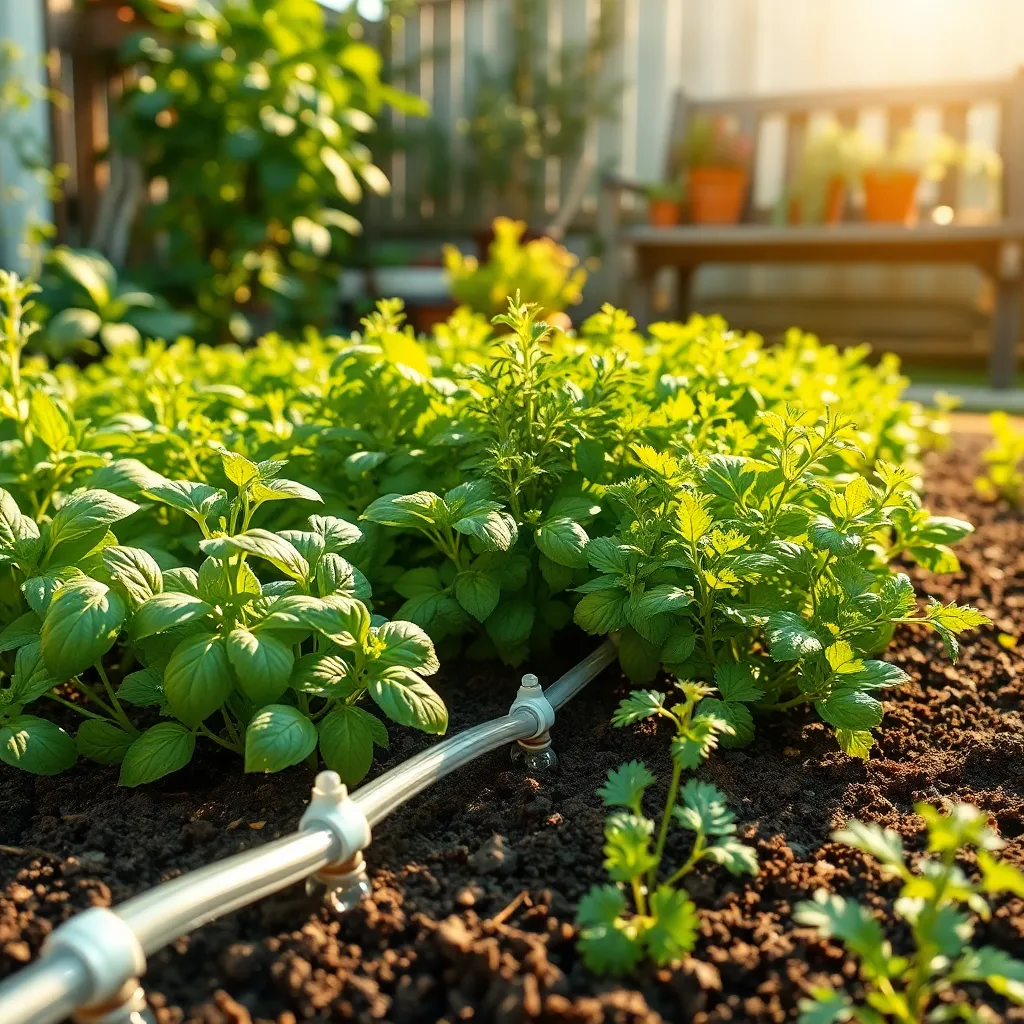
Implementing a drip irrigation system in your herb garden can significantly reduce water consumption while ensuring your plants receive consistent moisture. This method is especially beneficial for herbs like rosemary, thyme, and sage, which thrive with minimal water but still need reliable hydration.
To get started, choose a drip irrigation kit that suits the size and layout of your garden. Installing these systems is straightforward, often requiring just a few basic tools and some time to set up the tubing and emitters.
Place the emitters close to the base of each herb plant to deliver water directly to the root zone, reducing evaporation and waste. This targeted watering approach is crucial for water conservation and helps maintain soil health by preventing over-watering, which can lead to root rot.
Adjust the watering schedule based on the season and your specific climate conditions. During hotter months, you may need to increase the frequency slightly, but always check the soil moisture first to avoid unnecessary watering.
For a more advanced setup, consider incorporating a timer or smart controller with your drip irrigation system. These devices can automate watering cycles, ensuring your herbs receive optimal care even when you’re away, making it easier to maintain your low-water herb garden.
Water Early to Minimize Evaporation
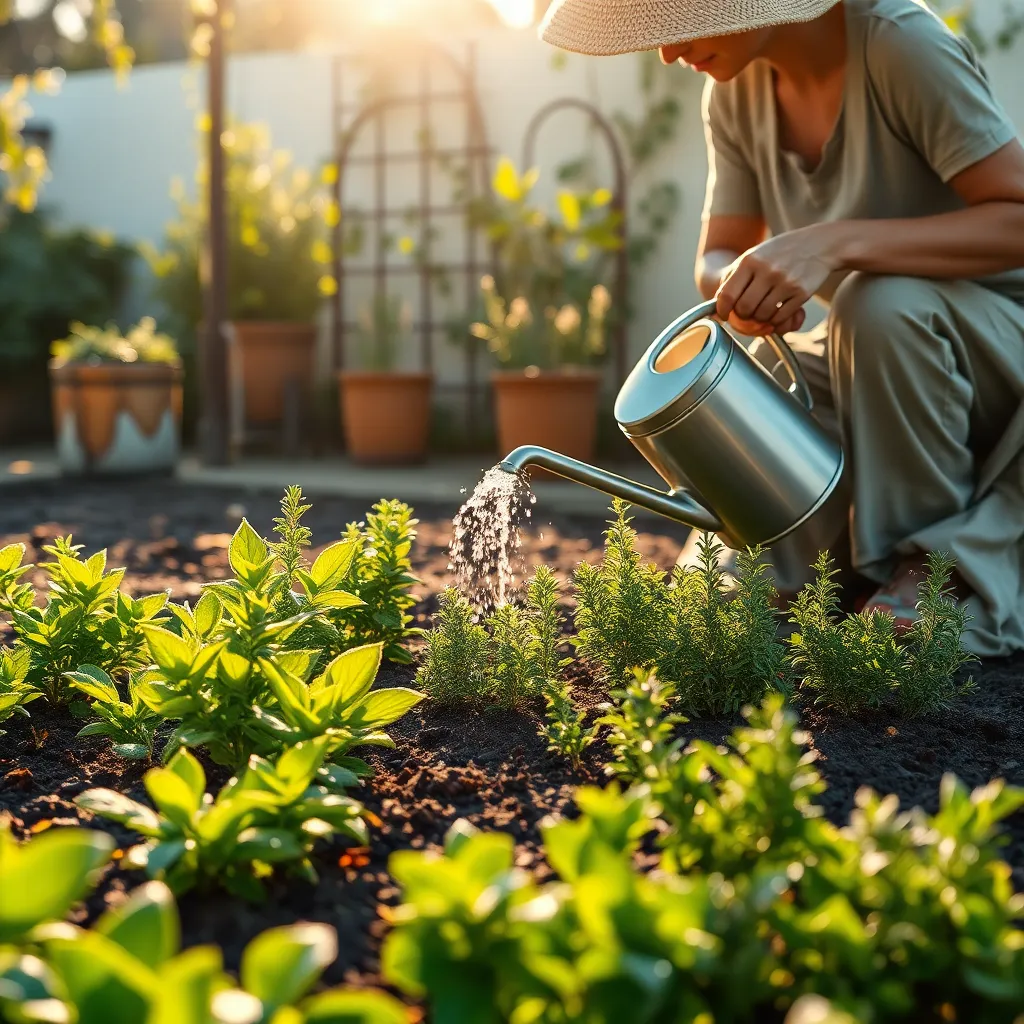
Watering your herb garden early in the morning is one of the most effective ways to minimize evaporation, ensuring your plants make the most of every drop. Morning watering allows moisture to penetrate the soil efficiently, providing hydration that sustains herbs throughout the day.
By watering early, you also reduce the risk of fungal diseases, as leaves have time to dry before the cooler night temperatures set in. This practice is particularly beneficial for herbs like basil and rosemary, which thrive in well-drained soil and can be susceptible to mildew if left damp overnight.
Consider using a soaker hose or a watering can with a narrow spout to deliver water directly to the soil, minimizing leaf wetting. For those with sandy soils, a morning watering routine helps retain the moisture longer, as sandy soils tend to drain quickly.
For more advanced care, adjust your watering frequency based on the season and weather conditions. During cooler months, herbs such as thyme and oregano, which prefer drier conditions, may require less frequent watering, while hot, dry periods may necessitate more regular attention.
Group Herbs with Similar Needs
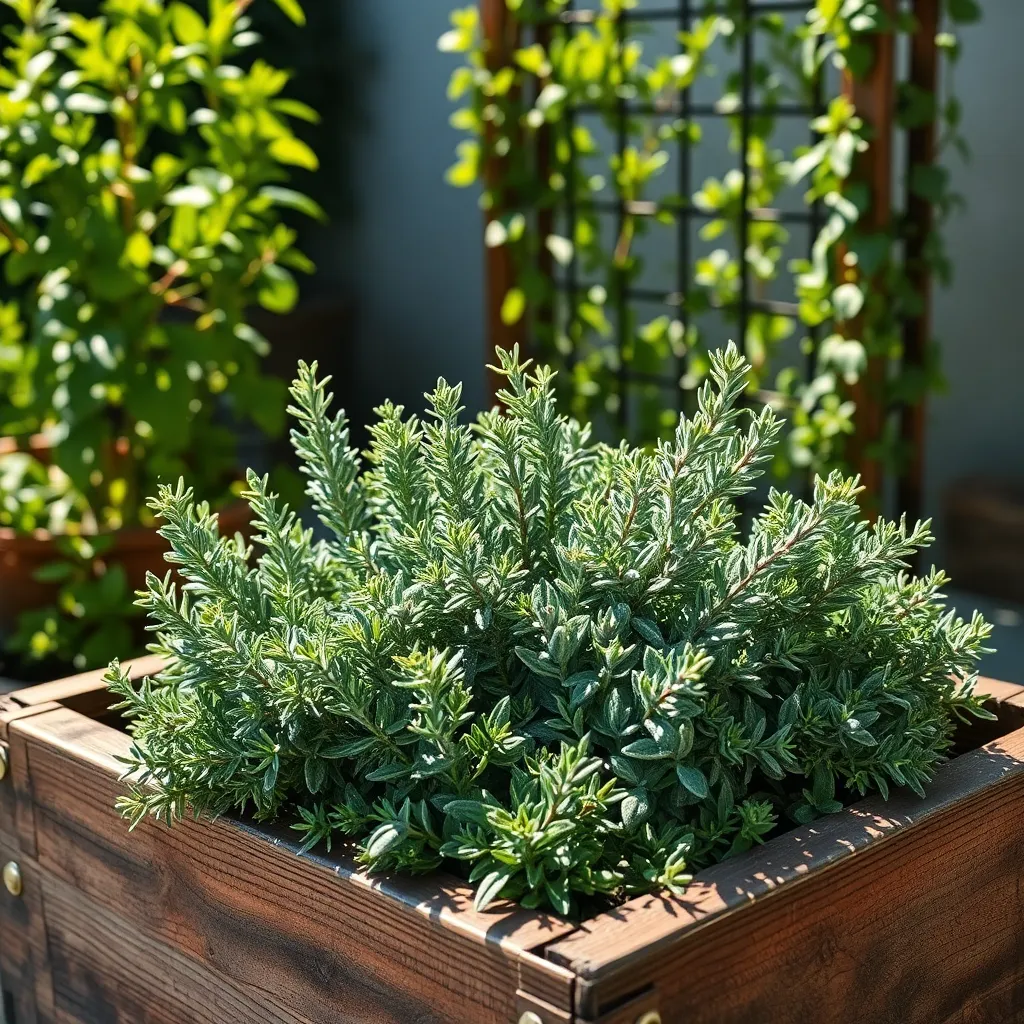
Grouping herbs with similar water and sunlight needs can help you create a thriving, low-maintenance garden. For instance, Mediterranean herbs like rosemary, thyme, and lavender prefer full sun and well-draining soil, making them ideal companions.
It’s advantageous to plant these herbs together to ensure they receive the consistent conditions they thrive in. They share a preference for dry environments, allowing you to water them sparingly and avoid overwatering.
When selecting soil, choose a sandy or gritty mix to improve drainage and prevent root rot, which is particularly beneficial for these drought-tolerant plants. Consider using raised beds or pots with drainage holes if your garden soil retains too much moisture.
For those seeking a more advanced approach, companion planting with herbs that deter pests can enhance garden health. Planting basil near tomatoes, for instance, can naturally repel certain insects, allowing both plants to flourish with minimal intervention.
Use Raised Beds for Better Drainage
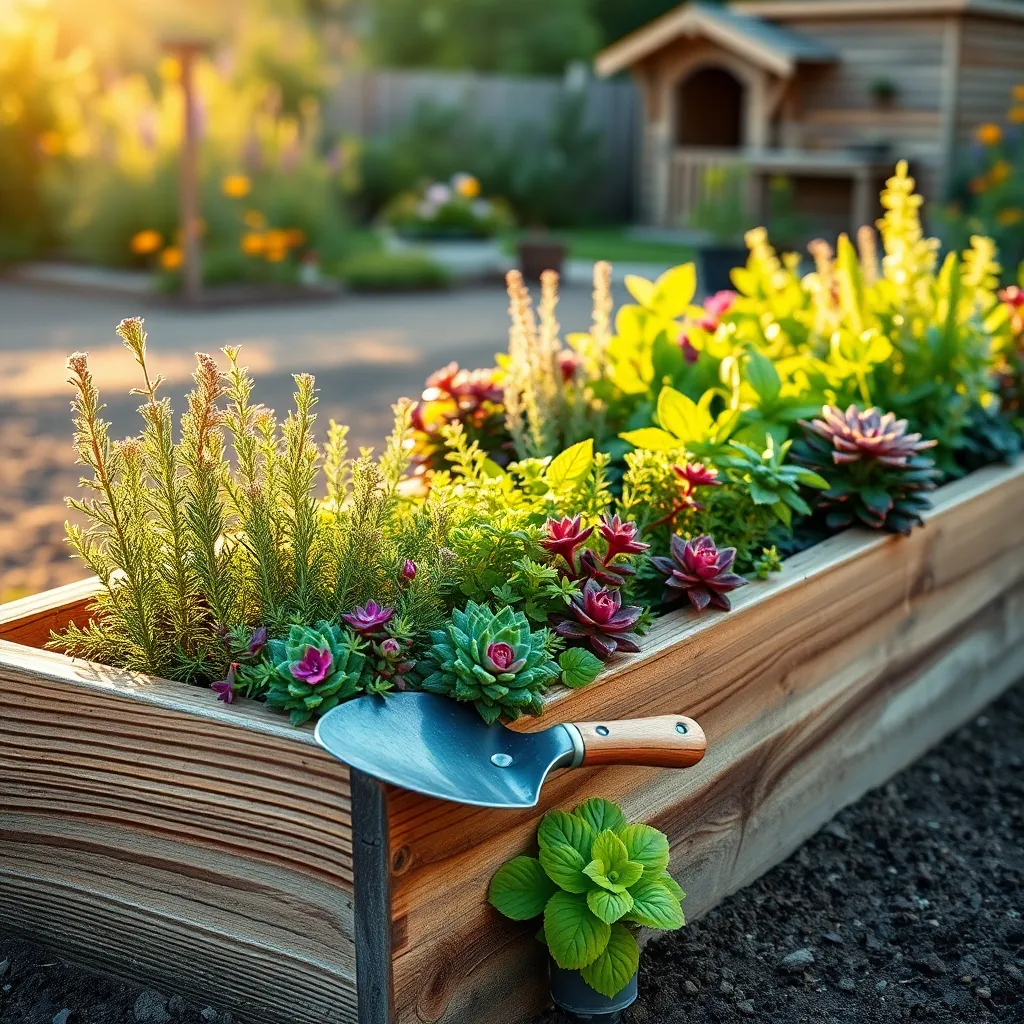
Raised beds are an excellent way to improve drainage in your herb garden, especially in areas with heavy clay soil. By elevating the soil, you ensure that excess water can drain away easily, preventing root rot in herbs that prefer drier conditions.
Consider building your raised beds at least 12 inches high to allow for ample root growth and drainage. Use a mix of well-draining soil, such as a blend of compost, peat moss, and coarse sand, to fill your beds for optimal plant health.
Position your raised beds in a location that receives at least six hours of sunlight daily, which is ideal for most herbs. If you’re in a particularly wet region, you might also consider adding a layer of gravel at the bottom of the bed to further enhance drainage.
For those in drier climates, raised beds can also help conserve water by focusing irrigation directly where it’s needed. Use a drip irrigation system to deliver water efficiently, keeping the soil consistently moist but never waterlogged.
Opt for Terracotta Pots
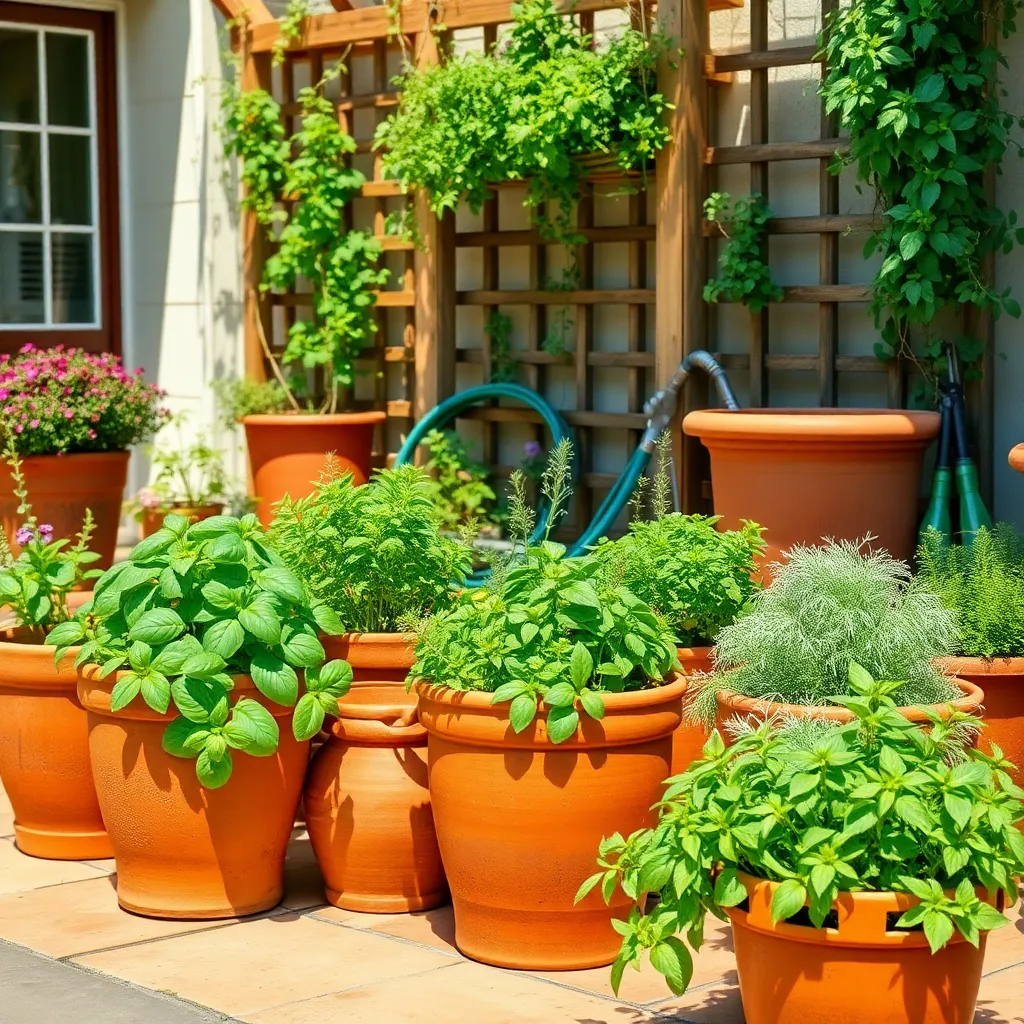
Terracotta pots are a fantastic choice for a low-water herb garden due to their porous nature. This characteristic allows for better airflow to the roots, helping to prevent root rot by allowing excess water to evaporate.
These pots are especially beneficial in maintaining the ideal environment for Mediterranean herbs like rosemary and thyme, which prefer drier conditions. Consider using a well-draining potting mix with added sand or perlite to complement the terracotta’s natural drainage capabilities.
To further optimize water conservation, place a layer of small stones or broken pottery at the bottom of each pot. This simple step enhances drainage and ensures that your herbs are not sitting in standing water, which can be detrimental to their health.
For those with more experience, experimenting with self-watering inserts can be a great way to maintain consistent moisture levels. This technique can help to sustain your plants during hot weather, reducing the need for frequent watering and providing a more stable environment.
Limit Fertilizer to Reduce Water Use
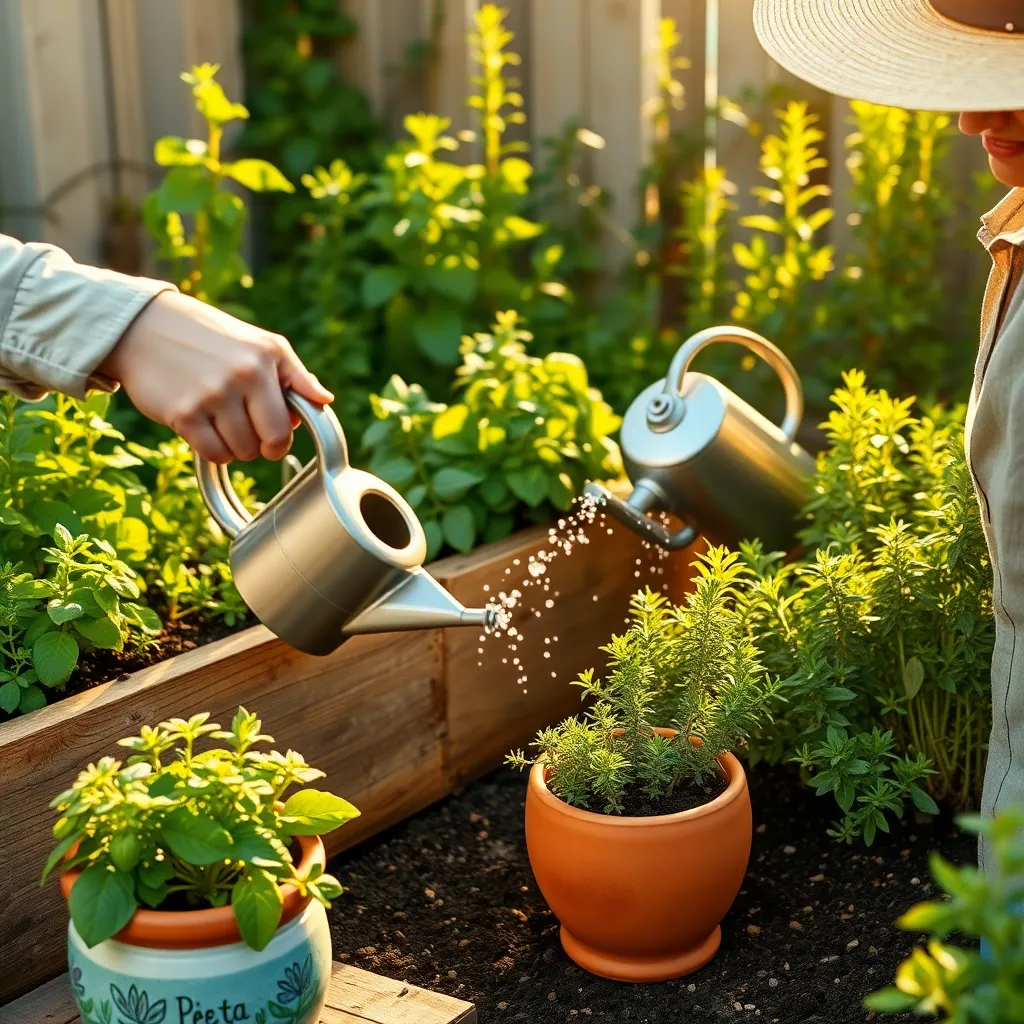
Reducing the use of fertilizers in your herb garden can significantly decrease water consumption. Over-fertilizing leads to excessive leaf growth, which in turn requires more water to sustain.
Begin by selecting a balanced, slow-release fertilizer that provides nutrients without overwhelming your herbs. Apply it sparingly, following the package instructions to ensure your plants receive only what they need.
Incorporating organic matter like compost into your soil can naturally enhance fertility, reducing the need for chemical fertilizers. This organic approach also improves soil structure, allowing it to retain moisture more effectively.
Experienced gardeners often use mulch to further conserve water. By applying a layer around your herbs, you not only reduce evaporation but also keep the soil temperature consistent, lessening stress on your plants.
Harvest Regularly to Promote Growth
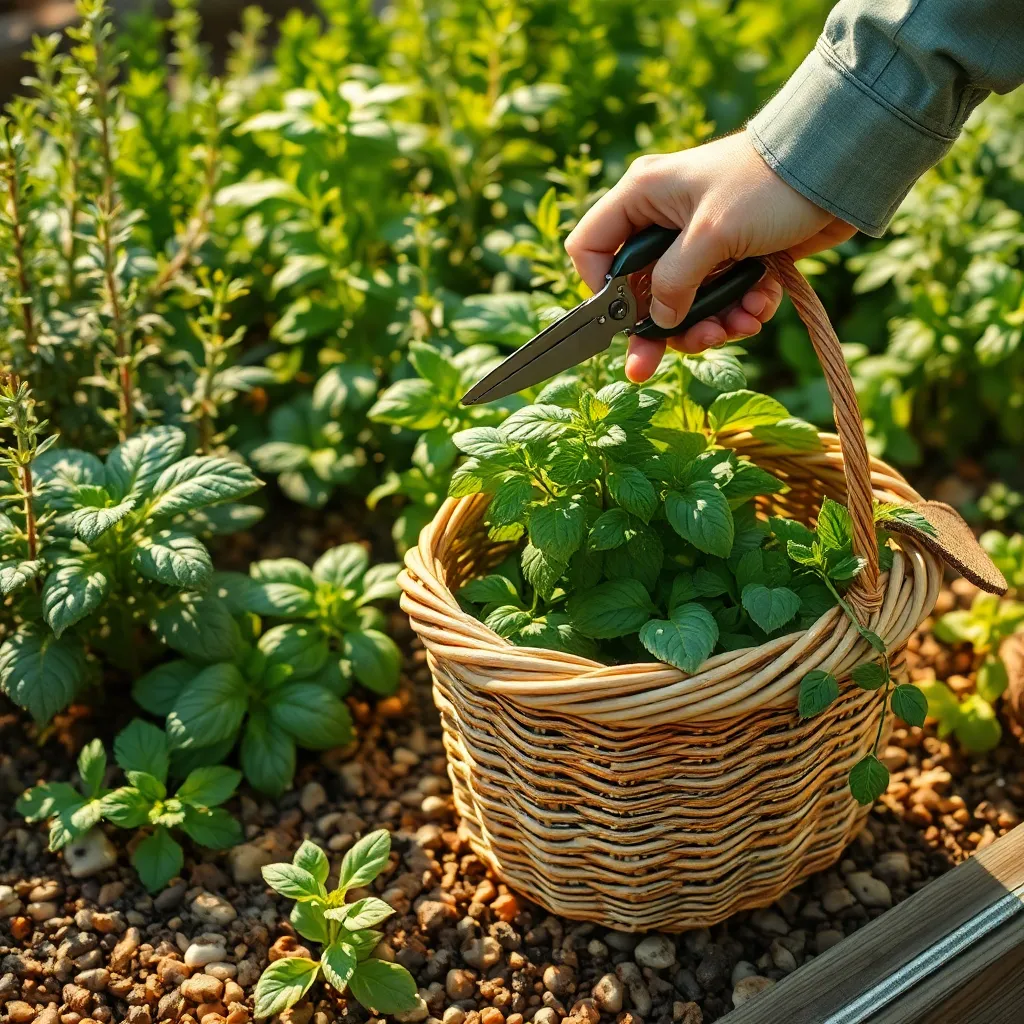
Regular harvesting is crucial for promoting continuous growth in your herb garden, especially in low-water environments. When you harvest herbs frequently, it encourages the plants to produce more leaves and stems, leading to a fuller and more abundant garden.
Begin with herbs like basil and mint, which thrive when trimmed regularly. Snip the top leaves just above a leaf node to stimulate branching and increase the plant’s bushiness, which in turn can optimize water retention within the plant.
For those growing rosemary or thyme, regular harvesting can prevent the plants from becoming woody and unmanageable. Clip these herbs with clean, sharp scissors to avoid damaging the plant, ensuring you leave a few inches of growth so that the plant can recover quickly and continue to thrive.
Advanced gardeners might consider succession planting for herbs such as cilantro, which tends to bolt in hot weather. By staggering plantings every few weeks, you can maintain a steady supply of fresh herbs while allowing earlier plantings to flower and go to seed, thus conserving water and adding interest to your garden.
Shade Herbs During Peak Sun
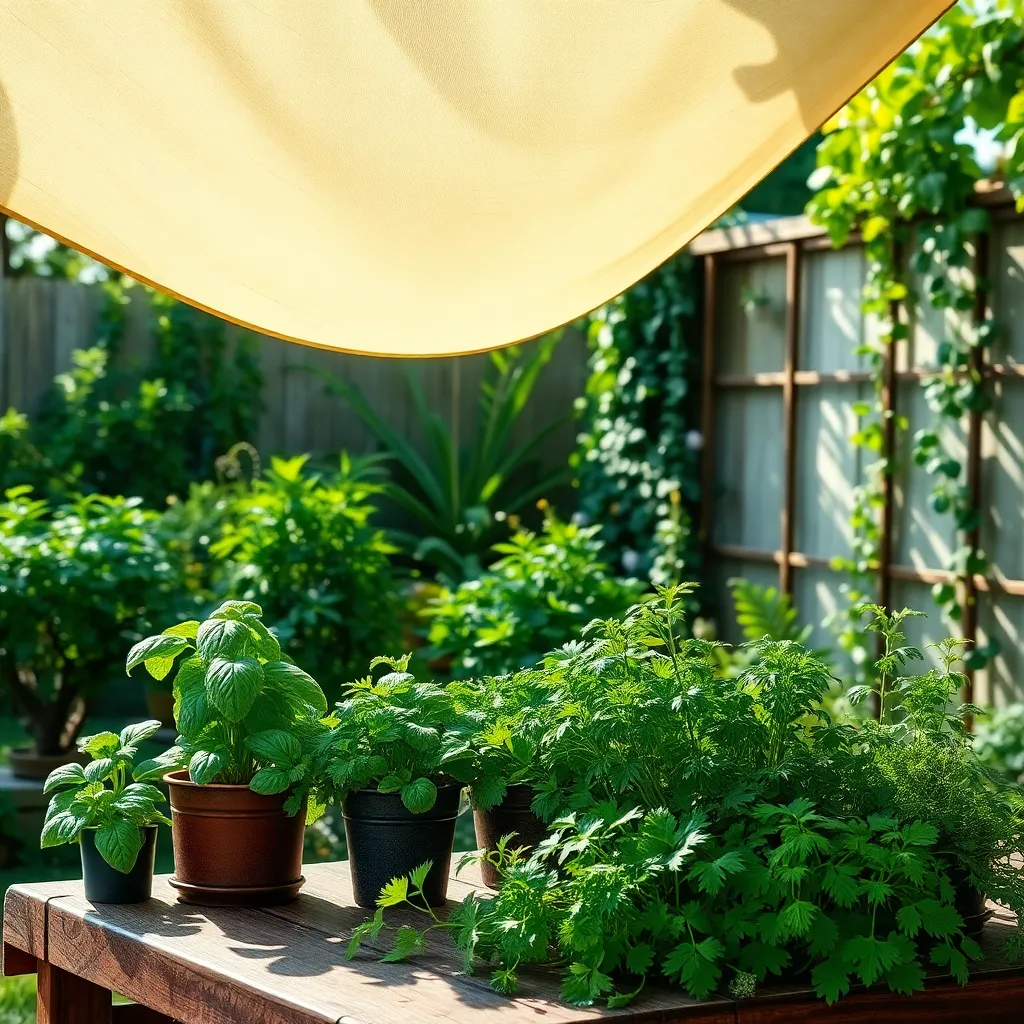
During the hottest parts of the day, many herbs benefit from a bit of shade to prevent stress and dehydration. Consider using a lightweight shade cloth or strategically placing taller plants nearby to provide natural protection from the sun.
For those new to gardening, a simple way to offer shade is by setting up a temporary structure like a patio umbrella over your herb garden. This method is especially effective for herbs like mint and parsley, which prefer some relief from intense sunlight.
Advanced gardeners might experiment with interplanting techniques, using taller plants like tomatoes or sunflowers to cast shadows on smaller herbs. This not only shades the herbs but also maximizes garden space and biodiversity.
If your garden is in a fixed location with no natural shade, consider planting herbs that thrive in full sun but still benefit from afternoon shade. Varieties such as rosemary and thyme are drought-tolerant and can handle intense heat, yet appreciate a break from the sun during peak hours.
Conclusion: Growing Success with These Plants
In nurturing both gardens and relationships, the principles of mindful care and sustainable practices go hand in hand. We’ve explored ten essential tips for cultivating a thriving low-water herb garden: choosing drought-tolerant herbs, optimizing soil quality, leveraging mulching techniques, embracing companion planting, implementing efficient watering strategies, and utilizing smart spacing. We’ve also discussed the importance of regular harvesting, ensuring pest control, and the role of seasonal adjustments and creative container gardening.
Now, it’s time to put these insights into practice. Start by selecting one tip that resonates with you and implement it in your own herb garden or relationship today. Whether it’s enhancing communication or creating a nurturing environment, small steps can lead to significant growth.
Remember, successful relationships, like gardens, flourish with consistent effort and attention. Save or bookmark this article as a handy reference for when you need a gentle reminder of these nurturing techniques. As you apply these strategies, you’ll find that your relationships, much like your garden, will thrive with resilience and beauty. Here’s to cultivating a future where your relationships blossom with vibrancy and joy.

